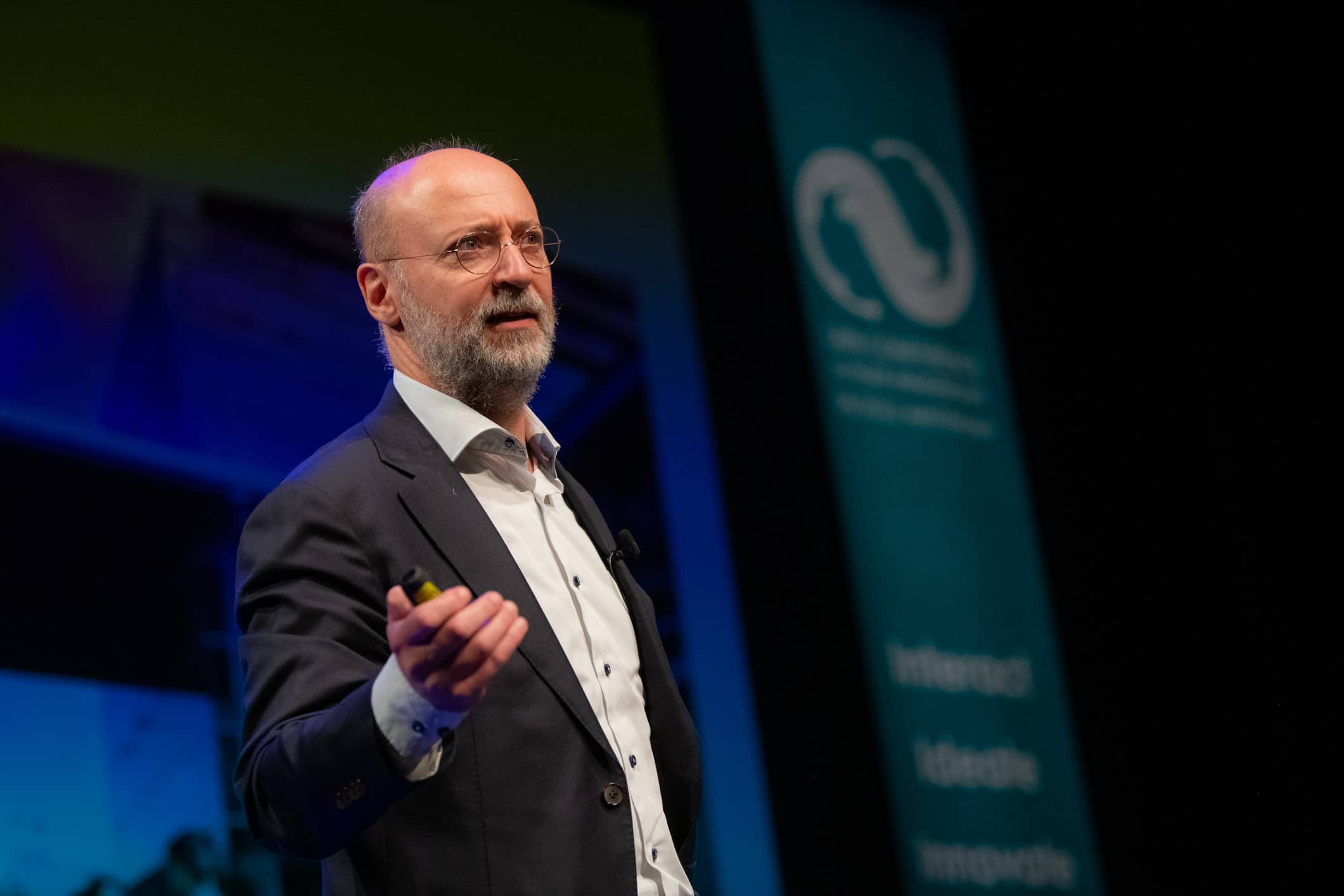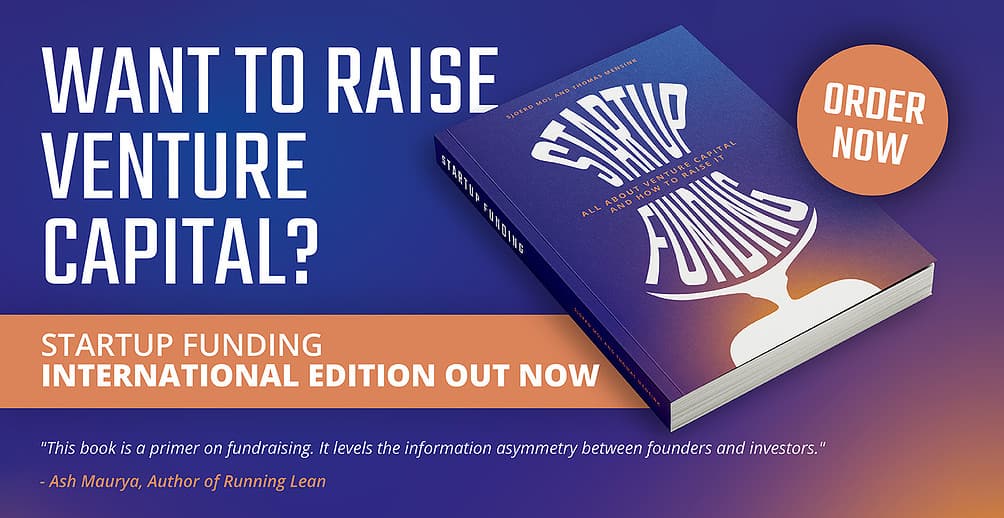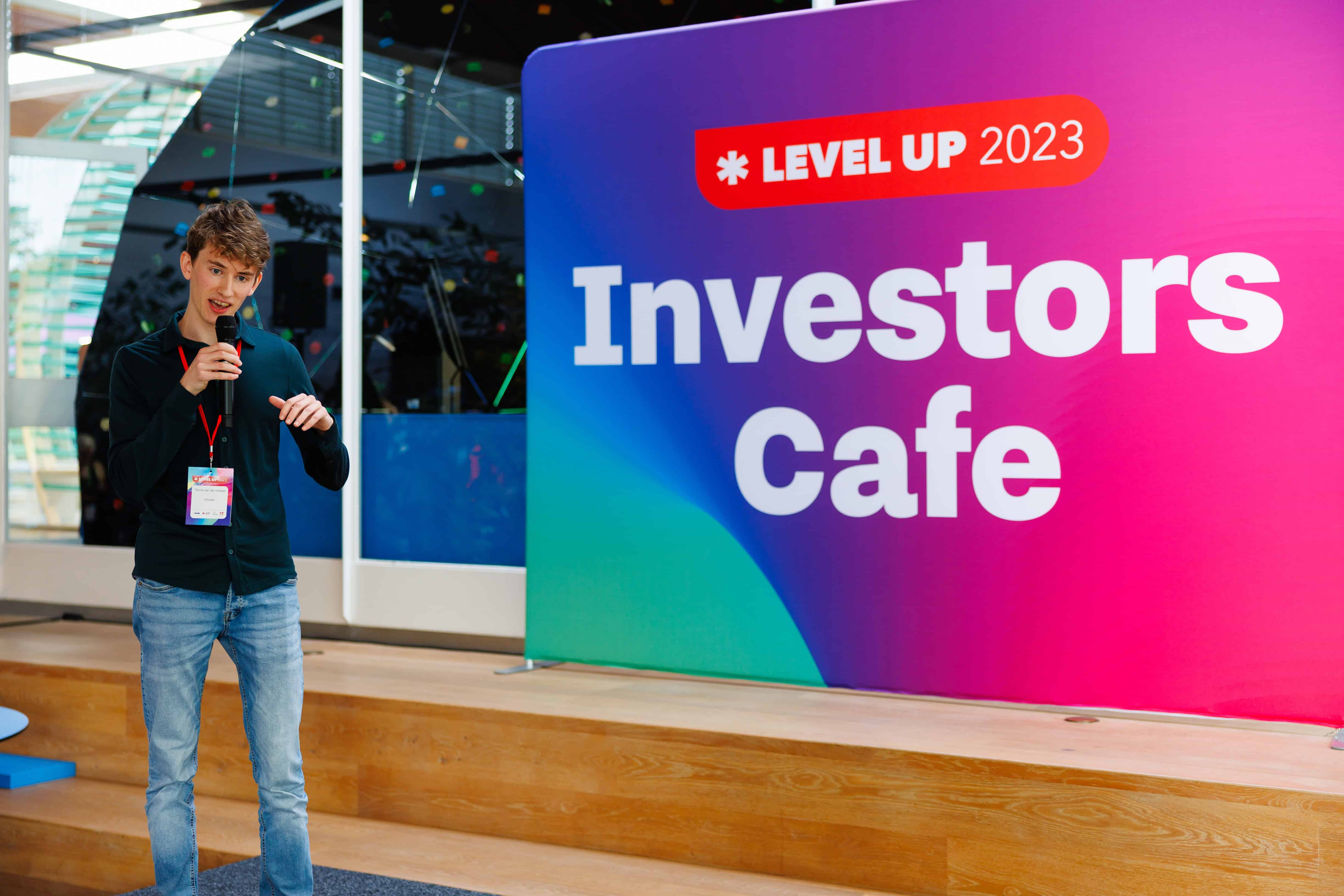
Last week, the authors published an international edition of ‘Start-up Funding: all about venture capital and how to raise it’. The initial plan was to compile Mol’s columns for MT/Sprout about VC and start-ups into a book. “That got a little out of hand,” he smiles. As a lawyer specializing in mergers, acquisitions, and venture capital, he guides start-ups and investors through funding rounds. Mol also co-founded Capital Waters, an initiative to make standard legal documentation available to start-ups.
- The book ‘Startup Funding’ focuses on raising venture capital for startups;
- The book offers an in-depth look at the vc process, including investor readiness and term sheets;
- Preparation and assertive negotiation are essential steps for start-ups to secure funding.
Handbook for venture capital
In 2020, Mol was invited as a guest on Mensink’s podcast At The Money. “The episode was about deal terms and how to make sure that you don’t get pegged by investors as a start-up. It’s one of the longest and, in terms of subject matter, perhaps the least sexy episodes I’ve made. But, it’s also the most listened to,” Mensink says. In addition to being a podcast host, he works as a start-up and investment analyst at his venture capital investment fund, Golden Egg Check.
“I dragged Thomas into it,” Mol laughs. “It ended up being much more than a compilation of my columns. It’s a handbook; we explain from A to Z what a funding process looks like, what’s involved.”
Necessary evil
“Both entrepreneurship and raising investments will always be hard work,” adds Mensink. “But the latter is a necessary evil for many entrepreneurs anyway; they would prefer to focus on developing their idea and growing their business. With the book, we want to show that it pays to delve into the financing side. From investor readiness to specific components in term sheets, we cover everything. We aim to convey these topics in an informal, accessible way, and if the feedback is to be believed, we are succeeding well. The feedback from entrepreneurs who have read the Dutch book is that we can convey these topics in an informal, accessible way.”
During the interview, it quickly becomes clear that the two are well-matched. Their areas of expertise complement each other well: Mensink specializes in preparing a deal, and Mol knows how start-ups can ultimately reach an optimal agreement.

Global similarities (and differences)
The first copy of “Startup Funding” was sold last January. Now it’s time for an international edition. Once again, it got out of hand; it’s more like a new book than a translation. The two start-up fanatics spoke with dozens of entrepreneurs and investors worldwide.
Mol: “Term sheets of a deal look 95 percent the same worldwide. The similarities outweigh the differences.”
That means the authors still need to avoid the differences. For example, they describe the difference between European investors (who “like to stay in control”) and their American counterparts (“They want to think along, but give their trust to the entrepreneur and expect it to be handled in a diligent manner.”).

The dark side of raising funding
If there is one thing the men learned from their conversations, it is that entrepreneurs and investors should be aware of raising capital. “Finland, the United States, and Nigeria; everywhere we asked the same question: How do you experience the investment process? Time and again, it became clear that raising financing takes a lot of time. Time that you, therefore, cannot put into running your business. That brings a lot of frustration. You don’t often hear about that side of the story – the sleepless nights, investors dropping out at the last minute. After writing this book, I realized how many obstacles founders must overcome. So as an investment fund manager, I see it as my job to support entrepreneurs,” Mensink said.
Another important lesson, Mol believes, is the realization that all parties want the same thing. The interests of the investor and start-up are much closer together than parties sometimes think. The investor and the start-up want the venture to be a success. “At the beginning of a process, there is often a lot of mistrust. If parties learn to understand each other better, it is easier to reach a deal. This also applies to investors; they should understand what entrepreneurship is all about. And the same goes for entrepreneurs. It helps if they understand what investors have to deal with. We hope our book can contribute to that.”

The golden tips: preparation and guts
About the ultimate tip for young entrepreneurs who want to obtain financing, the men do not have to think long. Mensink: “Preparation is key. Think about fundraising the moment you start your company, and get in touch with investors early on to build your network and gather their feedback. Even if you don’t have concrete funding plans yet, if investors know what you’re doing, you can get in-depth faster when you need funding.”
Also, that way, you can be more selective and better judge which investor is or is not a good fit for you and your company. Mol would advise every starting entrepreneur to approach the process assertively rather than letting it wash over them. “Founders could show a lot more guts in negotiations, as far as I’m concerned. That only works if you know what you are talking about, so make sure you know what a term sheet looks like and what is realistic.”
“Can people expect a third book from us any time soon?”, Mensink asks his coauthor. “Definitely not!” laughs Mol. “By now, when we write a book, we know one thing for sure. It gets out of hand, and it takes oceans of time.” Mensink adds, “But if we can help start-ups with it, we’re happy to do that.”
The international version of ‘Startup Funding: All about venture capital and how to raise it,’ can be ordered at this link.








